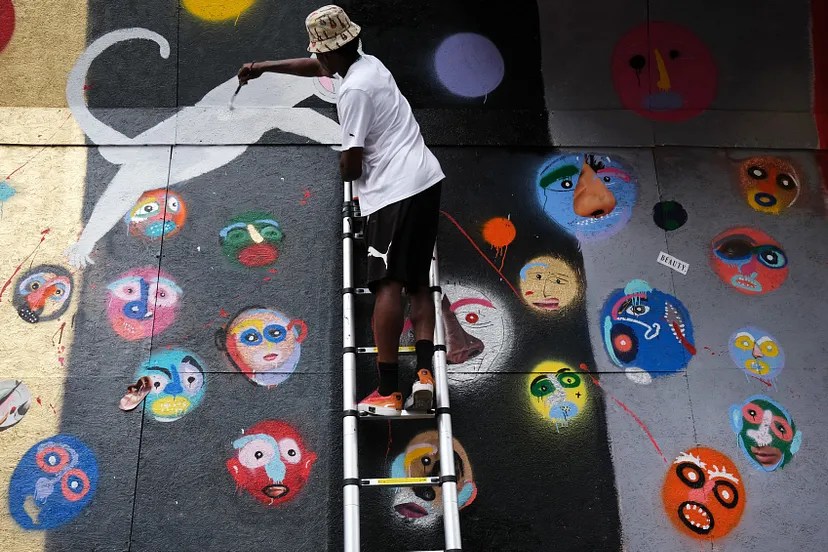
Editor’s note: In January, the New York Fed hosted “Transforming Community Development Through Arts & Culture,” a forum focused on an evolving era in community development that infuses art and cultural practice. This guest column was contributed by one of the New York Fed’s community development partners as a follow-on to that program. The views presented are the author’s alone and are offered to contribute to discussions on this topic.
Members of the creative economy are on the front line of the COVID-19 economic collapse. Museums and theaters were among the first spaces to close when the pandemic hit. Restaurants followed. Art fairs, fashion weeks, and film festivals have been canceled. For many, these closures may mean life is less fun, delicious, and stylish. But for millions of Americans working in the creative economy, the effects are more serious.
Still, COVID-19 is providing a crash course in the value of American ingenuity across industries linked to art and design. The creative economy generates $878 billion annually, or 4.5% of U.S. GDP, and is responsible for a $25 billion trade surplus. Government and philanthropy have responded to the pandemic with support for creative people, businesses, and nonprofits, but these resources are insufficient. Investment must play a role.
The economic recovery that started in 2008 and ended abruptly in March was shaped by a new force: impact investment. Today 24% of all assets under management in the United States consider social and environmental effects alongside financial return. The impact economy is growing every year as financial leaders and corporate CEOs publicly commit to meeting environmental, social, and governance standards.
It is tough to plan for the future when every day we learn of more hospitalizations and deaths. But the national slowdown imposed by the crisis offers a chance to imagine how we can better rebuild with creativity and conscious capitalism as pillars of a post-pandemic recovery. Entrepreneurs working in fashion, food, design, and media are showing investors where money needs to flow — both now and in the future.
Creative people are using business to get their communities through this tough time. Industrial Sewing and Innovation Center trains Detroiters for work in the apparel industry. ISAIC soon will be opening a social purpose clothing manufacturing company, but right now is responding to the critical shortage of personal protective equipment, managing a consortium of design and garment businesses to produce hospital-approved sewn surgical masks.
At the MaKen Studios Art District in Philadelphia, the SEWcial Cafe, an incubator for female fashion designers, is also making masks. Meanwhile, immigrant-owned Càphê Roasters is delivering Joy Boxes to local residents packed with products from small businesses, including craft beer, artisanal cheese, locally roasted coffee, and small batch ice cream.
In Phoenix, UrbanPlough Furniture has introduced a new standing desk for people suddenly working from home. The sale of one desk allows the company to employ one person for a week with health benefits; delivering the desks in the trucks of a local bread company keeps those drivers working, too.
Members of the creative class are getting their communities ready for a comeback. Until non-essential construction was halted, Upriver Studios was building sound stages so New York’s Hudson Valley can be ready for film and TV production — and the jobs and tourism that go along with it — as soon as this crisis has passed. Upriver is backed by impact investors — an example of conscious capitalism already working in the creative economy.
How can impact investors support efforts like these?
Banks and others motivated to deploy capital under the Community Reinvestment Act must remember the creative economy is part of comprehensive community development, meets all qualifying CRA standards, and offers portfolio diversification.
Foundations dedicated to the arts and committed to aligning their endowments with their missions should seize this moment to connect these two priorities.
Families and individual investors can help build an inclusive recovery by backing creative places and creative businesses through community development finance institutions, like the Local Initiatives Support Corporation and Enterprise Community Partners.
The current recession offers a chance to promote an inclusive and sustainable recovery fueled by creativity and conscious capital. We can build back better.
Laura Callanan is founding partner of Upstart Co-Lab and the former senior deputy chair of the National Endowment for the Arts.
This article was originally published by the New York Fed on Medium.
The views expressed in this article are those of the contributing authors and do not necessarily reflect the position of the New York Fed or the Federal Reserve System.










